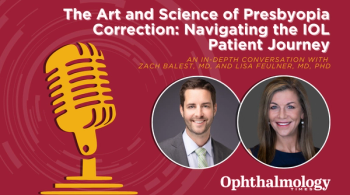
Tosional better than longitudinal ultrasound in phaco
Phacoemulsification procedures consume significantly less fluid using torsional compared with longituinal ultrasound in hard cataract cases, according to Khiun Tjia of the Netherlands.
Phacoemulsification procedures consume significantly less fluid using torsional compared with longituinal ultrasound in hard cataract cases, according to Khiun Tjia of the Netherlands.
At the Isala Clinics, Zwolle, Netherlands, hard cataracts were graded and yellow nuclei or denser were selected for the study. Cataracts were randomized to undergo either torsional (16) or longitudinal (16) ultrasound phaco procedures. Identical fluid dynamic parameters were set and the same tapered Kelman 45º tip was used. Torsional ultrasound was used in 100% continuous mode and longitudinal in pulse mode with 50% duty-cycle and 30 pulses/sec. All surgeries were performed by the same surgeon with a fast crack divide and conquer technique.
Torsional ultrasound used less fluid during the sculpt phase than longitudinal and significantly less than the longitudinal (p=0.0001) during irrigation/aspiration of cortical material. The quantities were similar during viscoelastice removal. Total fluid consumption for the two procedures was as follows: Torsional = 54.58 ml, longitudinal = 66.64 ml.
Tjia concluded that, since torsional ultrasound uses significantly less fluid it is a more efficient procedure than longitudinal ultrasound.
Ophthalmology Times Europe reporting from the XXIV Congress of the ESCRS, London, 9-13 September, 2006.
Newsletter
Don’t miss out—get Ophthalmology Times updates on the latest clinical advancements and expert interviews, straight to your inbox.


















































.png)


